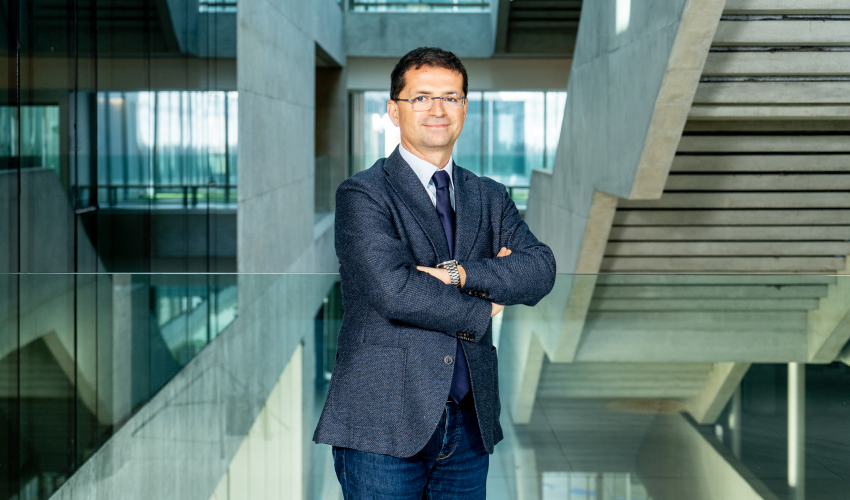
2023 OUTLOOK
TEN COMMENTS TO LOOK AT THE CHALLENGES OF THE NEW YEAR. CHAPTER THREE: EUROPE, WHICH NEEDS TO PLAY ACCORDING TO NEW PATTERNS AND INVEST MORE IN ITS DOMESTIC MARKET, THE RICHEST IN THE WORLD, BY FOCUSING ON A MODEL IN WHICH ITS STRATEGIC AUTONOMY IS CENTRALby Carlo Altomonte, Associate Professor of European Economic Policy
Translated by Alex Foti
February 24, 2022, the day of the Russian invasion of Ukraine, marks a historical discontinuity for Europe similar to the fall of the Berlin Wall in November 1989
After the fall of the wall, an export-led growth model emerged in Europe, supported by an efficient continental value chain, with Germany at the top as the main source of origin for exports. Market access was guaranteed by ongoing globalization and WTO rules. Key inputs for production were secured outside the EU by cheap energy from Russia, and inside the EU by fixed exchange rates that prevented unfair competition and competitive devaluations. The security of the markets was guaranteed, also at a low cost, by US military protection and NATO.
On February 24, 2022, the preconditions for this growth model were suddenly undermined. The invasion of Ukraine has dissolved the scenario of geopolitical stability created in the Old Continent after the fall of the Wall. The political imperative to avoid being blackmailed on gas has forced Europe to give up importing energy from Russia, in favor of alternatives that are equally available, but certainly much more expensive. Finally, the evident persistence of tensions between the United States and China question the secure access to global markets which has been at the heart of the European growth model over the past twenty years.
We need to acknowledge that this export-led model is over, and that the new global (dis)order requires a new game plan for Europe, based on its ability to invest more in its domestic market, which remains among the richest in the world, and on technologies related to the energy transition and digital transformation, including the combination of the two in supply chains, such as electric vehicles. The National Recovery and Resilience Plans of all European countries are already heading in this direction, and must represent a valid starting point around which to coordinate all future policy choices, starting with coherence in fiscal and energy policy.
On the geopolitical front, the need to replace the previous development model with one where strategic autonomy of the EU takes center stage is evident. Thus Europe needs to add to the issue of economic competitiveness guaranteed by investment in the two major transitions above, also the issue of security of energy supplies and a defense capability capable of projection in allied countries that are geographically close, in a coordinated but functionally autonomous manner from the USA.
To guide this new model, it is necessary to start from the three major founders of the EU, France, Germany and Italy, as a nucleus of federated countries that share fundamental interests. The institutional instrument in this phase could be constituted by closure of the triangle of bilateral agreements between the three founders: France and Germany are historically linked by the Élysée Treaty, Italy and France are now linked by the Quirinal Treaty, but there is still no agreement covering a broad spectrum of issues between Italy and Germany that is consistent with the provisions of the other two accords.
Building on this political agreement, the Commission could make proposals for a new institutional governance consistent with the reform agenda proposed by the Conference on the Future of Europe. Some of these proposals do not imply a change to the Treaties; others instead do, but could be pursued through the tool of enhanced cooperation, particularly in areas related to common foreign policy and defense policy.
Greater strategic autonomy also implies an ability to project European interests over an area necessarily wider than that of the 27 member countries, which includes all the Balkans and the countries of the Caucasian ridge from Ukraine to Turkey, as well as the southern Mediterranean, with respect to which the problem of immigration must be managed in a common way. Hence the idea of ​​a large Confederation of countries geographically linked to Europe which could participate in an economically integrated area.
Without these further steps, both internal and external, there is the concrete risk that in the new geopolitical context marred by the conflict, the European model will not find a new raison d'être. The EU of 27 states appears both too small, because it is geographically limited, and too big, because it is politically heterogeneous, compared to its ability to satisfy the new demand for public goods in terms of energy, military and economic security that comes from European citizens (EU and non-EU).
And when an institution is no longer able to respond efficiently to citizens, sooner or later it is consigned to history books.

